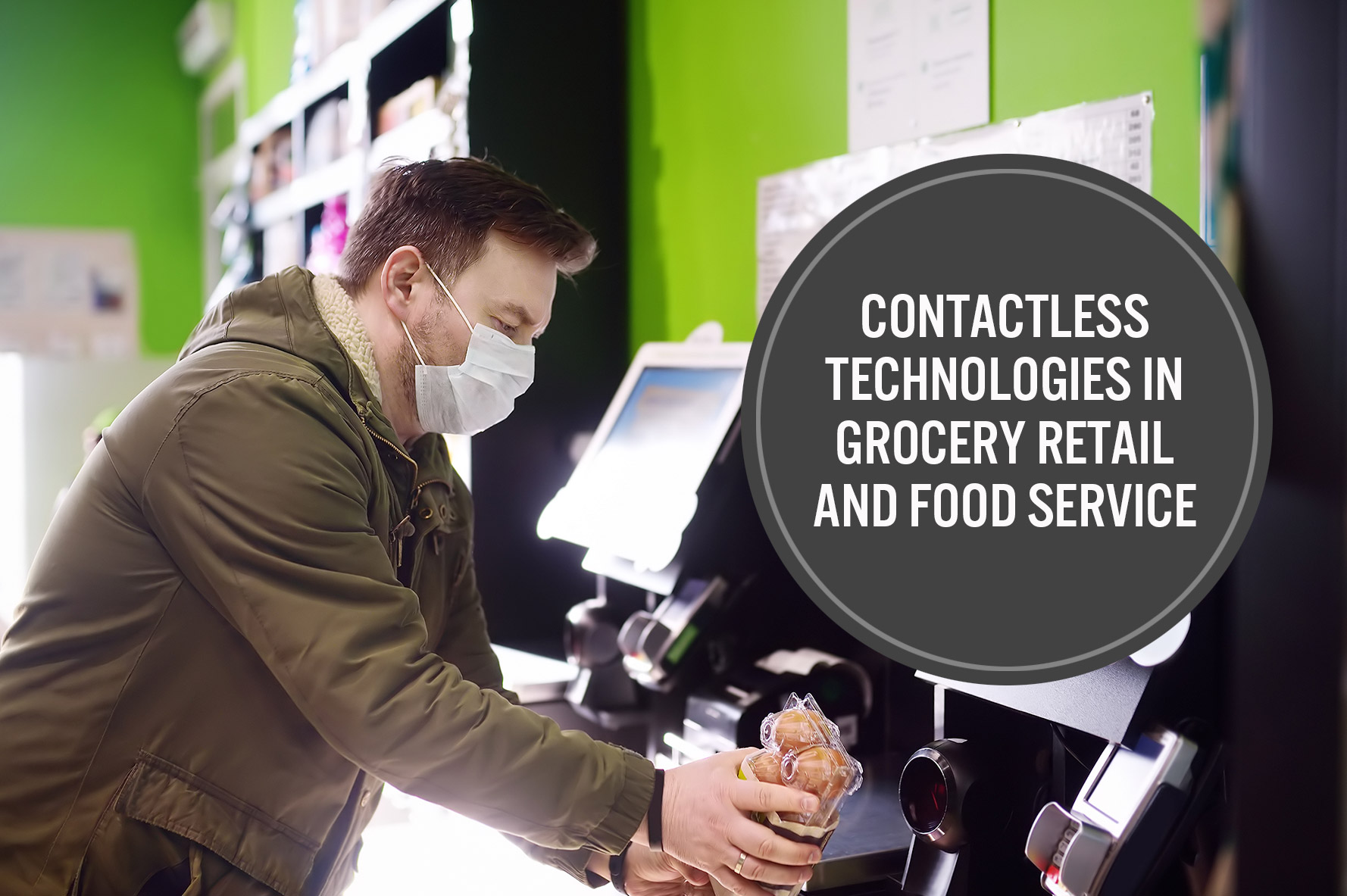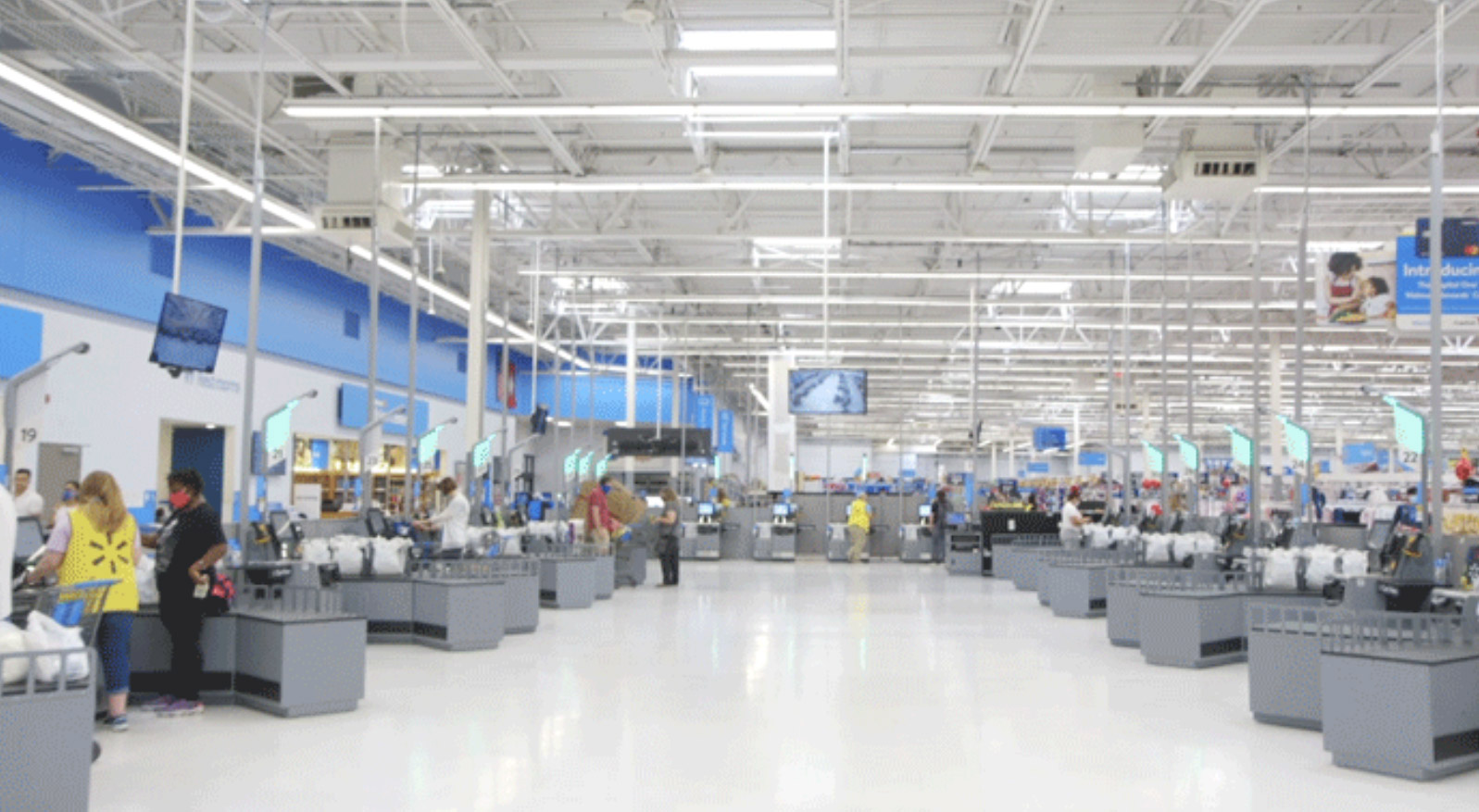
DIpil Das
What’s the Story?
Why It Matters
The threat of Covid-19 and associated forced store closures have changed the ways in which consumers shop by necessitating reduced contact along several stages of the shopping journey; the virus has instilled in people a heightened sense of fear of touching surfaces or being within short distances of another person. In the latest Coresight Research weekly survey of US consumers (conducted on July 15, 2020), we asked respondents about which changed behaviors from the crisis they expect to retain in the long term: Over 41% indicated that they will use contactless payment options in stores more often; and fully 49% said that they will shop more online and less in stores. Roughly half expect to have less physical interaction, such as shaking hands. Contact-light shopping, fulfillment and delivery is important for sanitary reasons, as we outline in our deep dive Do Not Touch: Contactless Technologies for Retail.- Paper currency is dirty. Research by the Southern Medical Journal found pathogens on 94% of US dollar bills tested. Many viruses and bacteria can live on surfaces for up to 48 hours, and paper money can host a live flu virus for up to 17 days.
- People may not wash their hands regularly. In a 2018 survey, 56% of Americans reported seeing coworkers leave a company restroom without washing their hands, and 24% observed a coworker doing so frequently, according to commercial washroom supplier Bradley Corporation.
Automation in Retail and Food Service: In Detail
Amazon Unveils Smart Shopping Cart To Enable Contact-Light Checkout Amazon has revealed that it will trial digital shopping carts at its Woodland Hills grocery store in Los Angeles later this year. Unlike the company’s Amazon Go stores—which are fitted out with overhead cameras that use high-end technology to enable an unstaffed checkout experience—the Woodland Hills store itself will not have to install cameras to facilitate contact-light checkout using the new shopping carts. At the start of the shopping journey, customers will be required to sign into the Amazon app on their smartphones and scan the QR code to gain entry into the store, similar to the way they enter an Amazon Go store. They can then place shopping bags inside the Dash Cart, as Amazon calls it, into which they directly place the items they want to buy. The Dash Cart is fitted with a touchscreen, a ring of cameras, a scale, weight sensors and computer vision to automatically detect and identify the products that are placed inside. The cart emits a beep to signify that a product barcode has been scanned. Alternatively, for items without a barcode, such as loose fruit, shoppers would use the touchscreen to select the price-lookup code before placing the products in the cart to be weighed and added to the purchase. Once they have finished shopping, customers can simply walk through a designated Dash Cart lane to checkout. The Dash Cart is currently designed to handle small to medium-sized grocery purchases only. While the use of the touchscreen does not make this an entirely contactless process, it does eliminate human interaction as cashiers are not required to scan and bag individual items for customers—and this also speeds up the checkout process. [caption id="attachment_113219" align="aligncenter" width="700"] Amazon’s Dash Cart
Amazon’s Dash Cart Source: Amazon [/caption] Walmart Trials Open-Plan Self-Checkout Areas as an Alternative to Checkout Lanes Walmart has done away with its checkout lanes at a supercenter in Fayetteville, Arkansas, to introduce a spacious area for customers to complete their purchases. Store manager Carl Morris said that the “old register layout (gave a) sense that there is only a limited amount of space to check out at.” The new checkout area has 34 self-checkout registers arranged in a circular manner around a large, open space. Each register has a green light to indicate availability, making it easier for shoppers to identify those that can be used and checkout faster. Walmart has retained cashiers to act as “hosts” for the checkout experience. The hosts are available to help customers with the checkout and bagging products if needed. The open layout allows for safe social distancing with room to maneuver carts, and the hosts that do help customers with checkout and bagging will position themselves safely behind a barrier. According to Walmart, with the open-plan layout and self-checkout registers, cashiers require fewer hours of training than in typical lane-driven register layouts, and adapting to customer traffic patterns is easier. [caption id="attachment_113220" align="aligncenter" width="700"]
 Walmart’s self-checkout area at Fayetteville Supercenter, Arkansas
Walmart’s self-checkout area at Fayetteville Supercenter, Arkansas Source: Walmart [/caption] Rouses Market and Deuce Drone To Test Grocery Delivery by Drone Family-owned grocery retailer Rouses Market has announced that it will begin testing grocery delivery by drones this fall from its store in Mobile, Alabama. The retailer operates 64 stores in Alabama, Louisiana and Mississippi, and it already offers personal shopping and one-hour delivery services using third-party delivery providers such as Instacart and Shipt. Rouses Market has partnered with Deuce Drone, a company that develops drone delivery systems for brick-and-mortar retailers, for the pilot program. Donny Rouse, the retailer’s CEO, said that drone delivery will not only be the quickest method of delivery—within 30 minutes—but also the safest in the current Covid-19 environment, as it will not involve human delivery agents going door to door to drop off orders. Startups, as well as established retailers, are already developing drones for automated last-mile delivery, as we examined in our report, Retail 2020: 10 Retail-Tech Startup Trends— Post-Crisis Update. [caption id="attachment_113231" align="aligncenter" width="700"]
 Source: Company reports/Coresight Research[/caption]
White Castle To Test Robot Fry Cook
US fast-food chain White Castle has announced plans to trial a robotic chef from Miso Robotics that can flip burgers and make French fries at its restaurants. Known as “Flippy,” the robotic chef will reduce human contact with food and thus cut the risk of transmitting food-borne pathogens.
Flippy will integrate with the restaurant’s point-of-sale system so that it can begin preparing each order as soon as it is placed. By automating repetitive and dangerous tasks such as frying, White Castle can redirect staff to other tasks focused on consumers’ experiences—thus enhancing safety, efficiency and customer satisfaction.
White Castle plans to begin the trial of Flippy at one of its restaurants in Chicago in September before it implements the robotics solution at outlets across its chain.
Coca-Cola Introduces “Pour by Phone” for Its Beverage Dispensers
Coca-Cola has unveiled a contactless option for its touchscreen beverage dispenser Freestyle, as people continue to be wary of touching surfaces that have been touched by others. Freestyle, which was introduced in 2009, offers customers numerous drinks, including the ability to choose mixes and have the machine prepare the mixed drink.
With Coca-Cola’s new innovation, “Pour by Phone,” customers can use their smartphone camera to scan a QR code on the dispenser’s display to access a page with beverage options. The phone relays the user’s selection back to the machine, which dispenses the chosen beverage. Customers that already have the Coca-Cola Freestyle app can scan the QR code through the app and choose their pre-saved drink mixes.
Coca-Cola trialed the new technology earlier this summer at a few Firehouse Subs, Five Guys and Wendy’s outlets in Atlanta, and plans to make its entire US portfolio of over 10,000 Freestyle machines contactless by the end of the year.
[caption id="attachment_113222" align="aligncenter" width="700"]
Source: Company reports/Coresight Research[/caption]
White Castle To Test Robot Fry Cook
US fast-food chain White Castle has announced plans to trial a robotic chef from Miso Robotics that can flip burgers and make French fries at its restaurants. Known as “Flippy,” the robotic chef will reduce human contact with food and thus cut the risk of transmitting food-borne pathogens.
Flippy will integrate with the restaurant’s point-of-sale system so that it can begin preparing each order as soon as it is placed. By automating repetitive and dangerous tasks such as frying, White Castle can redirect staff to other tasks focused on consumers’ experiences—thus enhancing safety, efficiency and customer satisfaction.
White Castle plans to begin the trial of Flippy at one of its restaurants in Chicago in September before it implements the robotics solution at outlets across its chain.
Coca-Cola Introduces “Pour by Phone” for Its Beverage Dispensers
Coca-Cola has unveiled a contactless option for its touchscreen beverage dispenser Freestyle, as people continue to be wary of touching surfaces that have been touched by others. Freestyle, which was introduced in 2009, offers customers numerous drinks, including the ability to choose mixes and have the machine prepare the mixed drink.
With Coca-Cola’s new innovation, “Pour by Phone,” customers can use their smartphone camera to scan a QR code on the dispenser’s display to access a page with beverage options. The phone relays the user’s selection back to the machine, which dispenses the chosen beverage. Customers that already have the Coca-Cola Freestyle app can scan the QR code through the app and choose their pre-saved drink mixes.
Coca-Cola trialed the new technology earlier this summer at a few Firehouse Subs, Five Guys and Wendy’s outlets in Atlanta, and plans to make its entire US portfolio of over 10,000 Freestyle machines contactless by the end of the year.
[caption id="attachment_113222" align="aligncenter" width="700"] Coca-Cola’s touch-free Pour by Phone option enables users choose drinks from touchscreen-based soda fountains via their smartphones
Coca-Cola’s touch-free Pour by Phone option enables users choose drinks from touchscreen-based soda fountains via their smartphones Source: Coca-Cola [/caption]
What We Think
In the wake of the coronavirus crisis, consumers are averse to crowds, eating out at restaurants or touching surfaces that have been in contact with others. However, we expect changed behaviors to continue in the longer term, gradually becoming the new normal. Grocery retail and food-service businesses will therefore need to rethink processes that are heavily reliant on human input and contact, and automate them to provide safety and efficiency. Implications for Brands/Retailers- Brands, retailers and food-service businesses should look to accelerate the development of their apps to enable consumers to participate in the shopping journey and food services more through their smartphones—thus reducing contact, such as Coca-Cola’s beverage-dispenser innovation.
- Although self-checkout options are already widespread, grocery retailers can look to introduce new technologies and in-store formats to facilitate efficiency and consumer safety, such as Amazon’s Dash Cart and Walmart’s open-plan register layout.
- Our weekly surveys demonstrate that a significant proportion of consumers are looking to retain heightened use of contactless payments and shop more online after the crisis ends. However, by adopting contactless technologies, retailers can ease consumer concerns and encourage them to come into stores and shop safely. We explore how retailers can do this in the post-Covid-19 era in our report, Retail 2020: 10 Trends in Global Retail—Post-Crisis Update.
- As retailers, brands and other businesses look to cut down human intervention at various stages in their operations, we expect to see the wider adoption of robots for repetitive actions, such as flipping burgers at restaurants—which frees up staff to focus on the customer experience.
- Previously, we have seen larger retailers—or those with technological competence, such as Amazon—develop and adopt automated drone delivery solutions. With e-commerce playing a greater role than ever before in retail, particularly in grocery, we expect retailers and brands of all sizes to adopt drones for last-mile delivery.